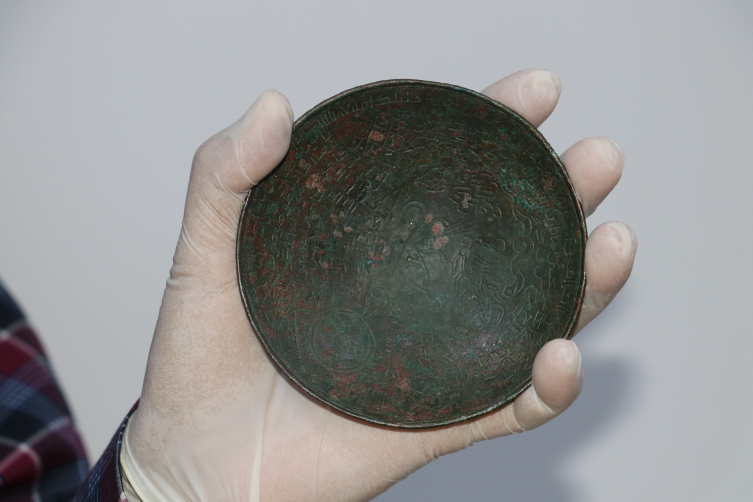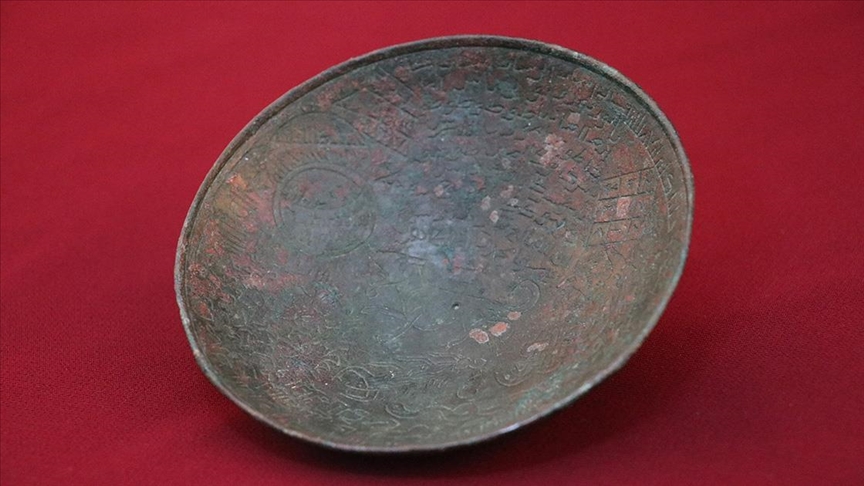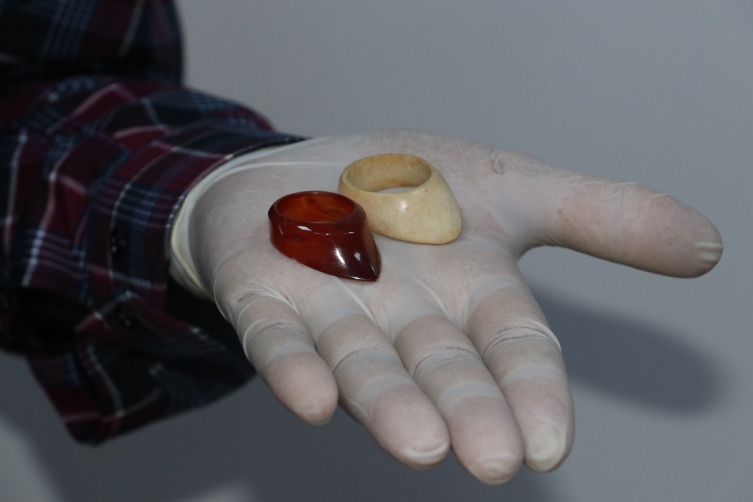
Rare talismanic healing bowl found in Hasankeyf excavations
During the ongoing excavations in Hasankeyf Mound, one of the oldest Neolithic settlements in Anatolia, an 800-year-old talismanic bowl used for healing and two thumb rings made of agate and bone used by archers were unearthed.
Hasankeyf Mound is located in the Hasankeyf district of Batman province in southeastern Turkey.
In addition to artifacts from the Neolithic (Pre-Pottery Neolithic A – PPNA) period, finds from the Iron Age and Hellenistic periods were also discovered in Hasankeyf Mound.
Rescue excavations, which started with the Ilısu Dam Project in 2008, are carried out under the direction of associate professor Zekai Erdal from Mardin Artuklu University (MAU) Department of Art History.
📣 Our WhatsApp channel is now LIVE! Stay up-to-date with the latest news and updates, just click here to follow us on WhatsApp and never miss a thing!!
Associate Professor Zekai Erdal stated that there are only 22 healing bowls in the world, reaching 23 with Hasankeyf, and said that they unearthed a healing bowl made of bronze material used in folk medicine in the medieval Islamic world.

Associate Professor Erdal said, “The healing bowl with talismans, seals and verses on it actually has some connection with Hasankeyf. According to local belief in Hasankeyf, there is a scorpion and snake relief on the middle gate. “According to this belief, it is accepted that the people of Hasankeyf or the people who go to the castle are not bitten by scorpions or snakes,” he said.
Erdal emphasized the belief that the bowl, adorned with motifs of a double-headed dragon, dog, snake, and scorpion, provided protection from two directions. He explained, “Drinking water from the healing bowl was believed to protect individuals from dog bites, snake, and scorpion stings. It was considered a remedy for those affected by dog bites, snake, or scorpion stings.”
“The examples of the healing bowls found in Hasankeyf can be seen in the Topkapı Palace Museum, Kayseri Museum, and Istanbul Metropolitan Municipality Museum. Evaluating these bowls comes down to folk medicine. Ultimately, in Islamic culture, there are practices like magic, amulets, and talismans. Likewise, on the healing bowl, such practices were applied, aiming to protect against the harms of animals through these talismans and magic,” he added.

Erdal stated that they found two zihgir, similar examples of which they had not encountered in previous excavations, along with the healing bowl, and said:
“One of the zihgirs was found during an excavation in a tomb. It is understood from this that the person lying in the tomb is an important person, but his identity has not been determined. Zihgirs are made of agate and bone. Zihgir is one of the most important elements used in the Islamic world and Turkish-Islamic arts in the Middle Ages, especially in the field of archery. “It is a ring-shaped device that is worn on the finger to prevent the bowstring from damaging the finger during archery.”
The works were delivered to Hasankeyf Museum Directorate and preserved.
You may also like
- A 1700-year-old statue of Pan unearthed during the excavations at Polyeuktos in İstanbul
- The granary was found in the ancient city of Sebaste, founded by the first Roman emperor Augustus
- Donalar Kale Kapı Rock Tomb or Donalar Rock Tomb
- Theater emerges as works continue in ancient city of Perinthos
- Urartian King Argishti’s bronze shield revealed the name of an unknown country
- The religious center of Lycia, the ancient city of Letoon
- Who were the Luwians?
- A new study brings a fresh perspective on the Anatolian origin of the Indo-European languages
- Perhaps the oldest thermal treatment center in the world, which has been in continuous use for 2000 years -Basilica Therma Roman Bath or King’s Daughter-
- The largest synagogue of the ancient world, located in the ancient city of Sardis, is being restored











Leave a Reply